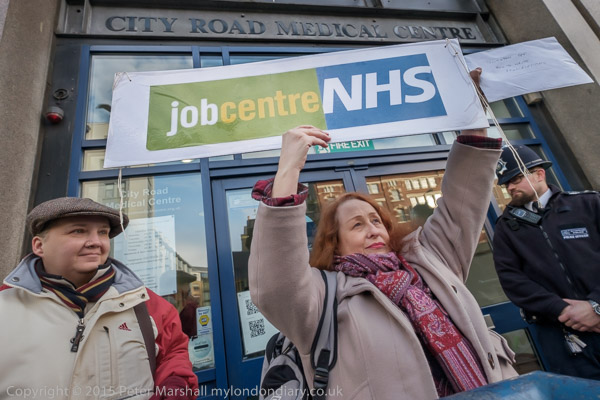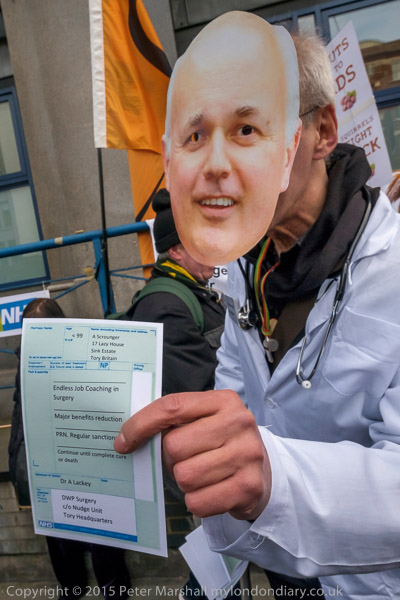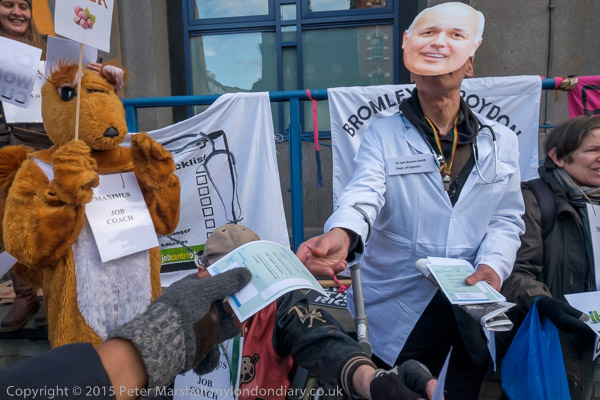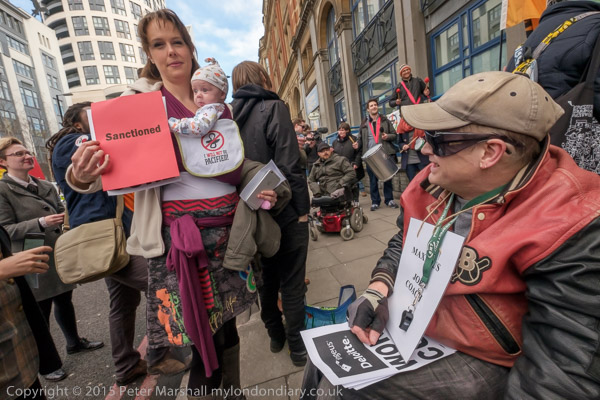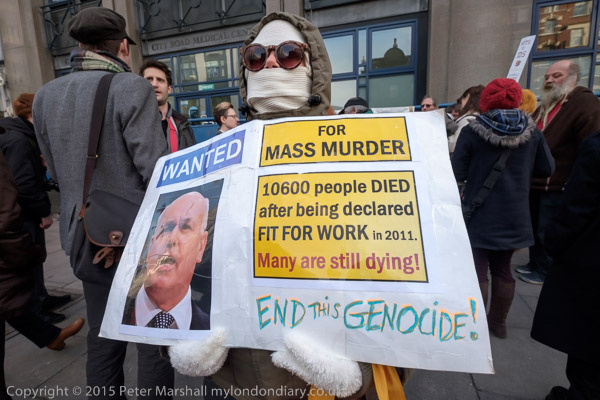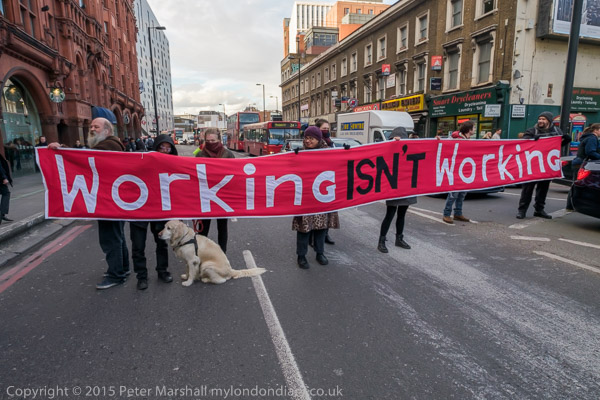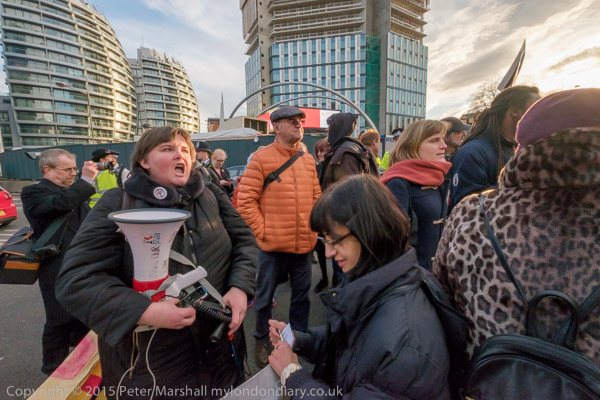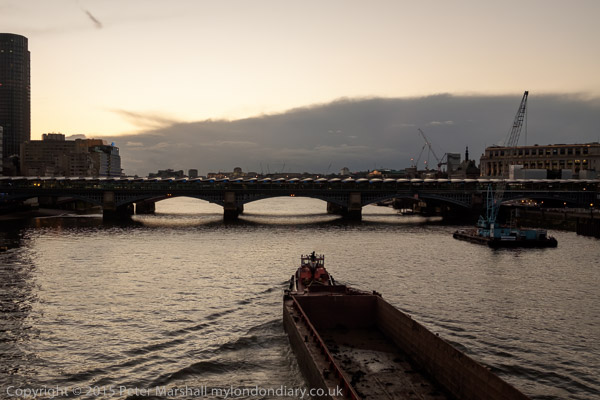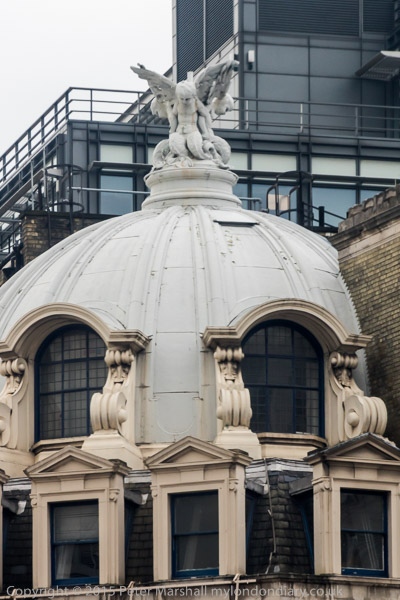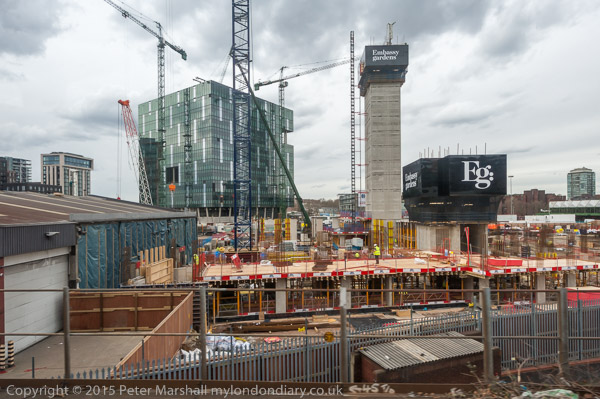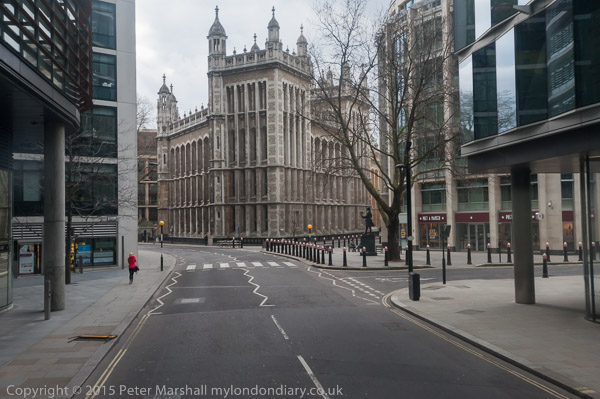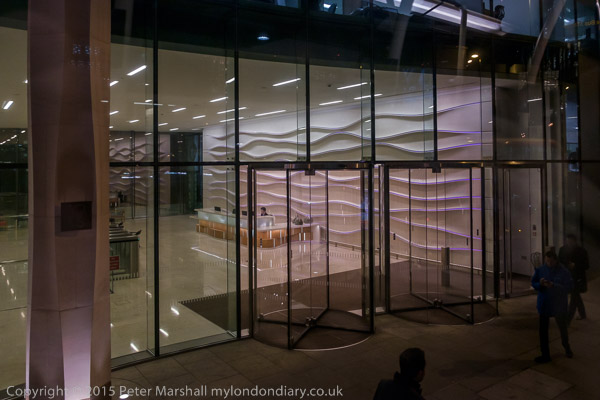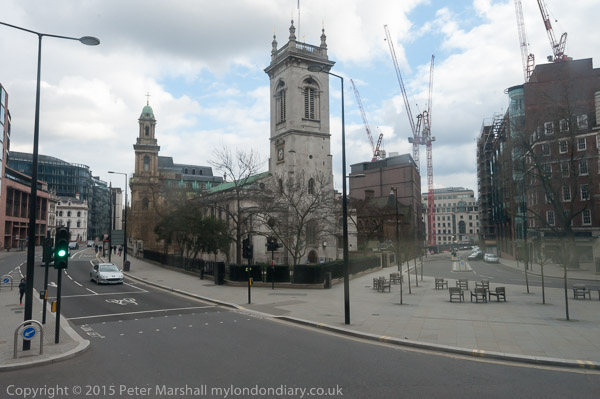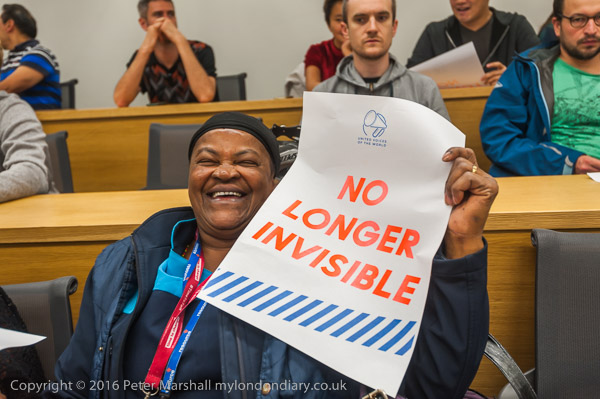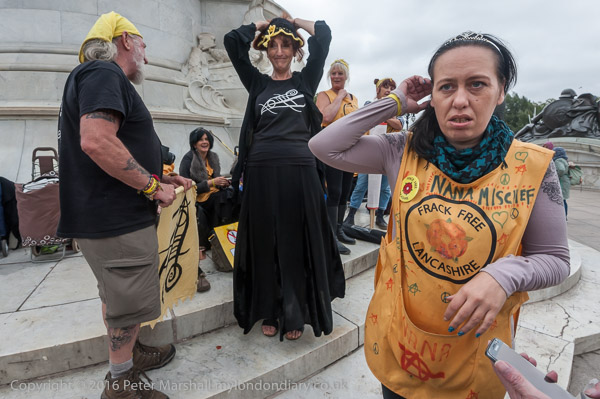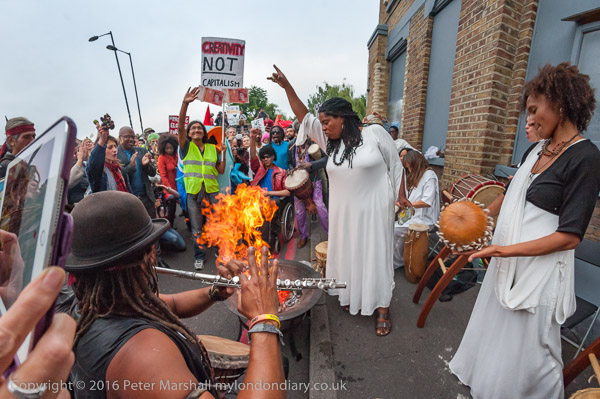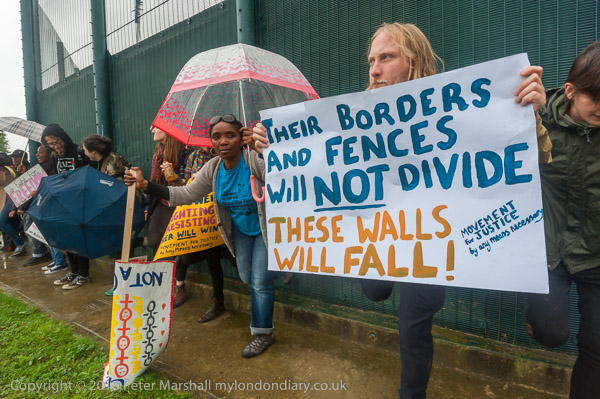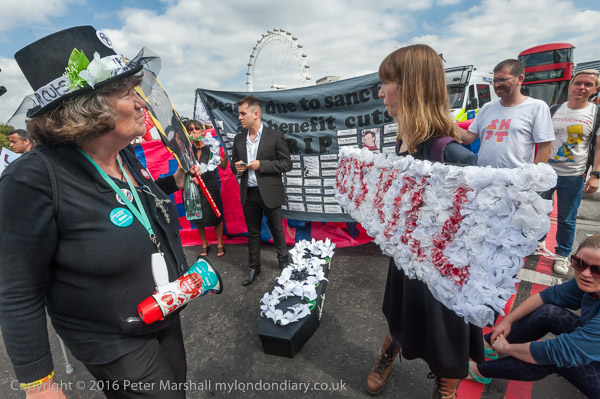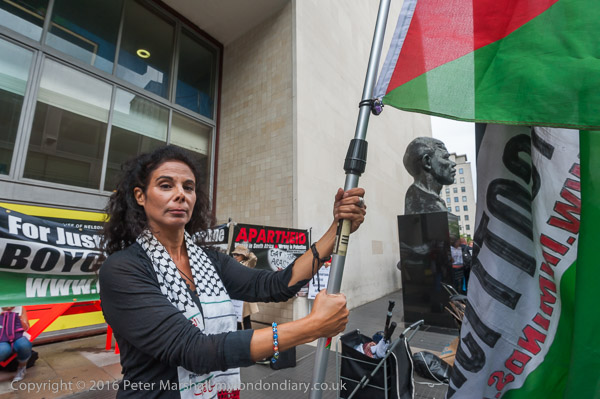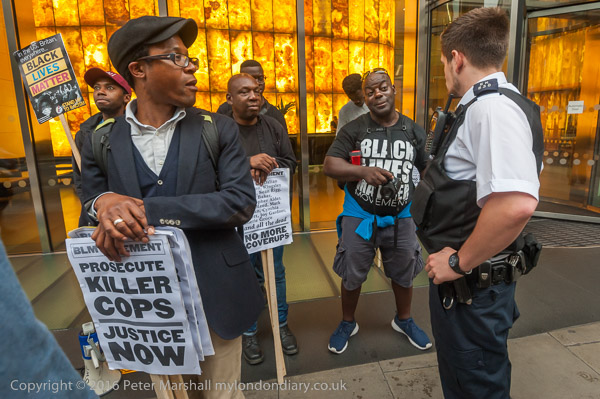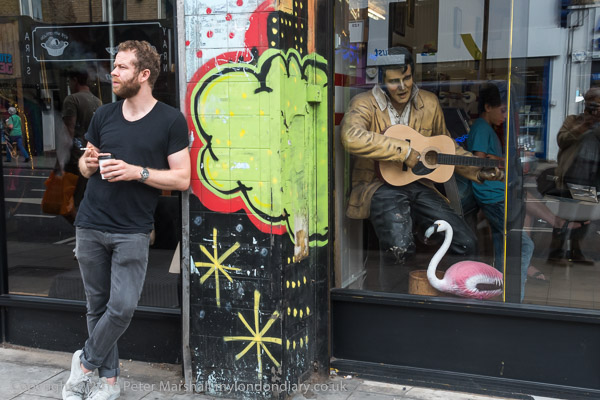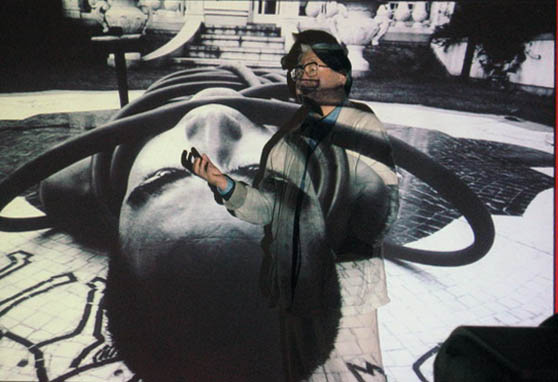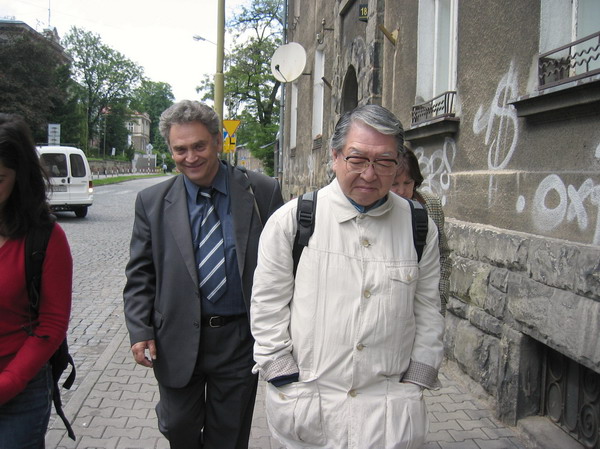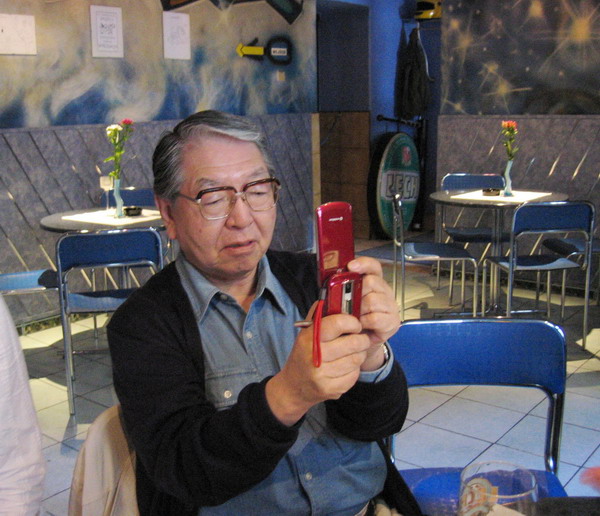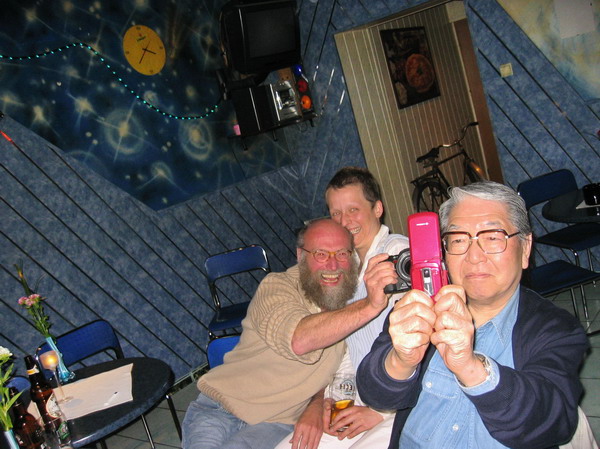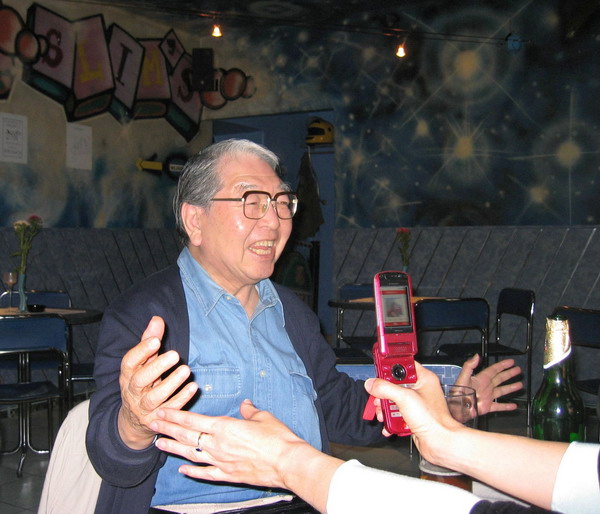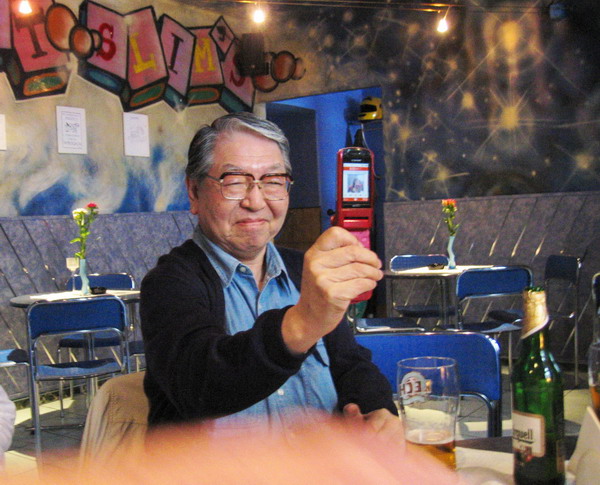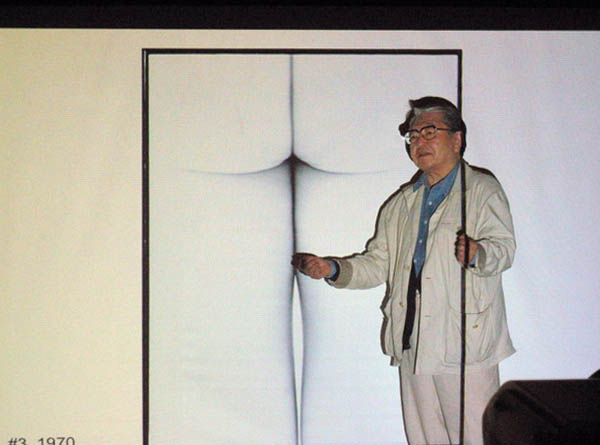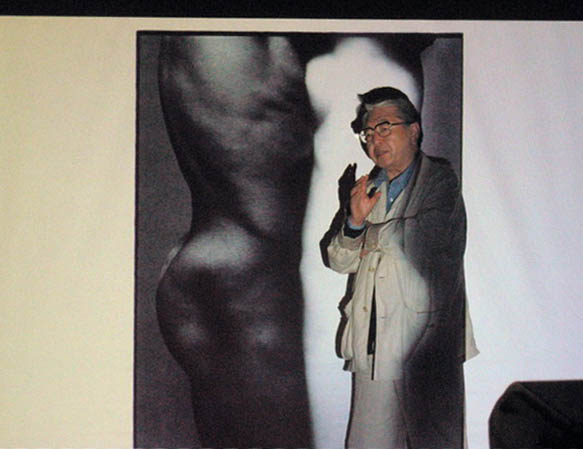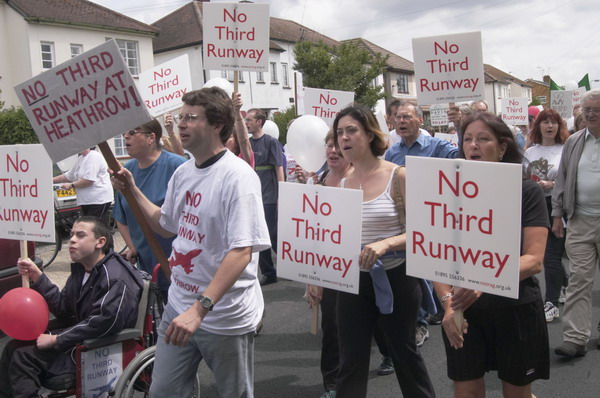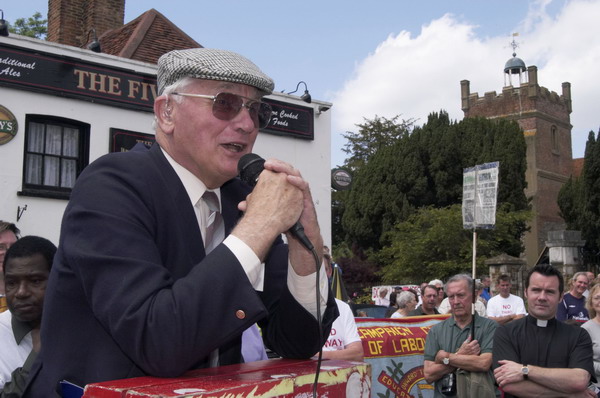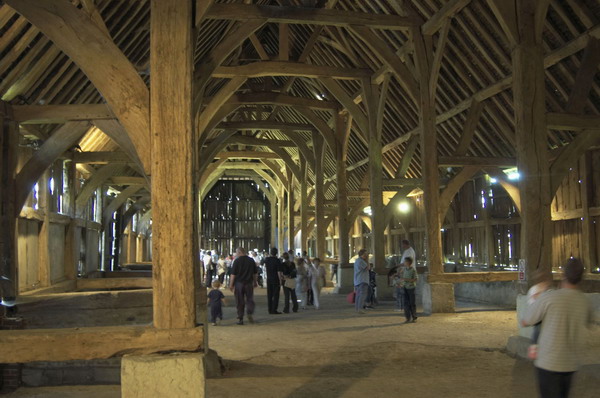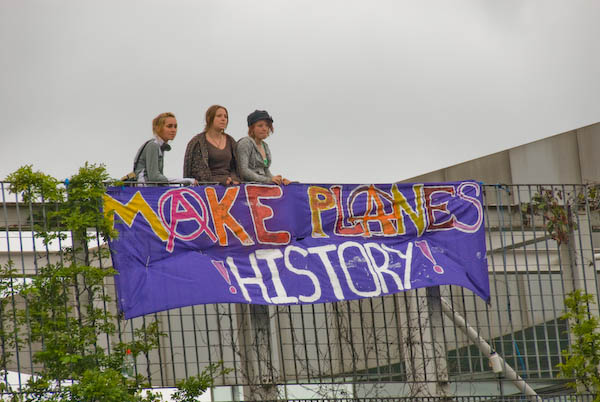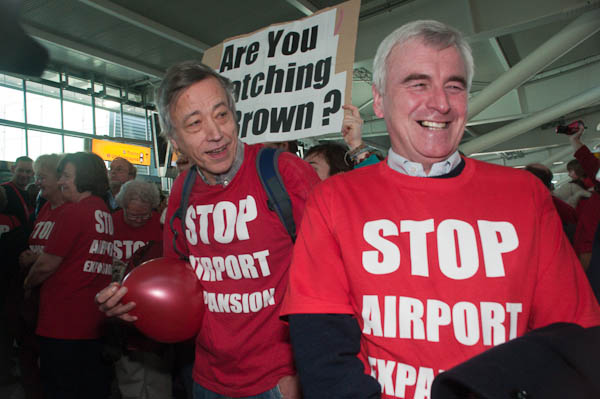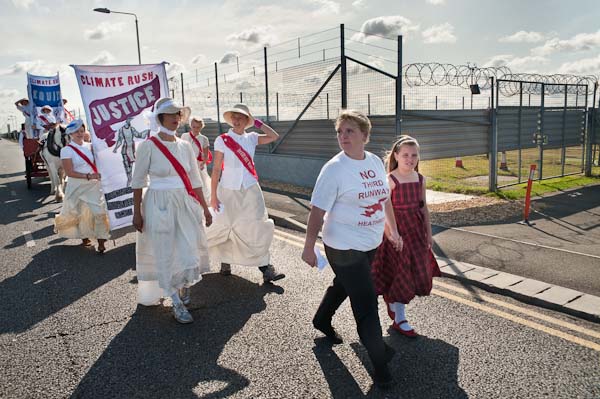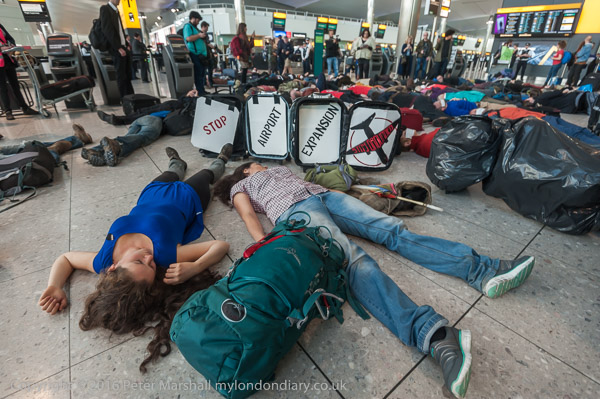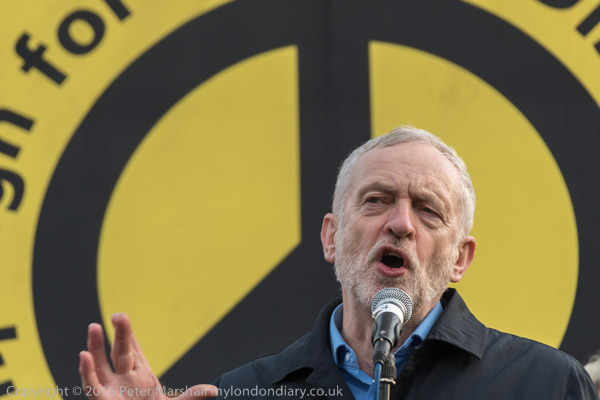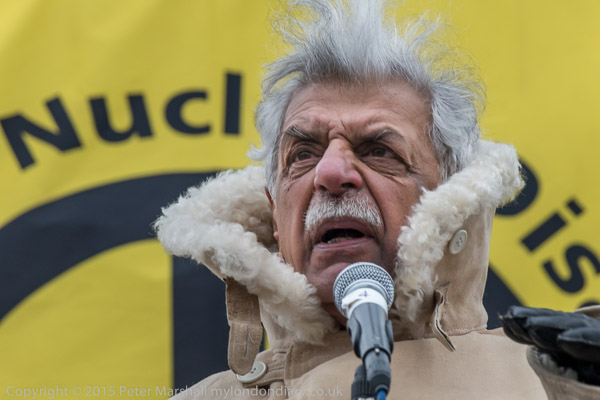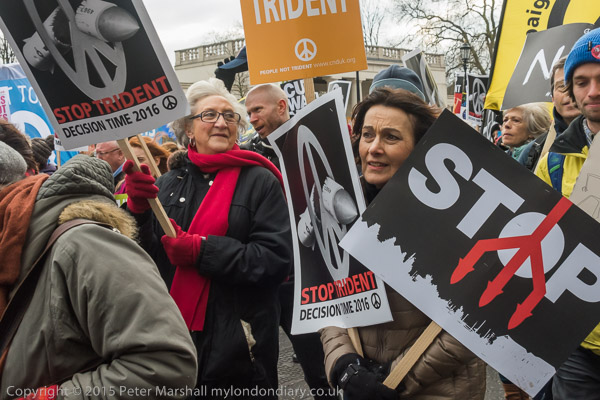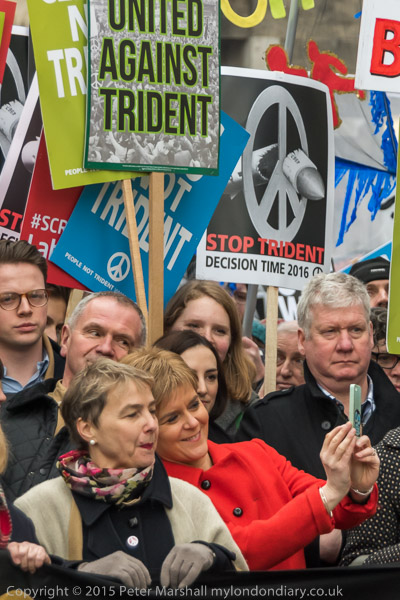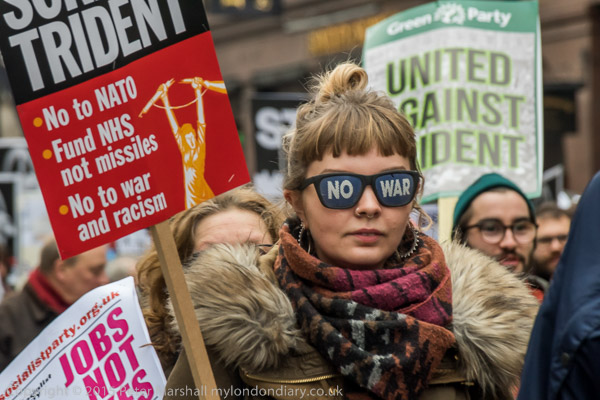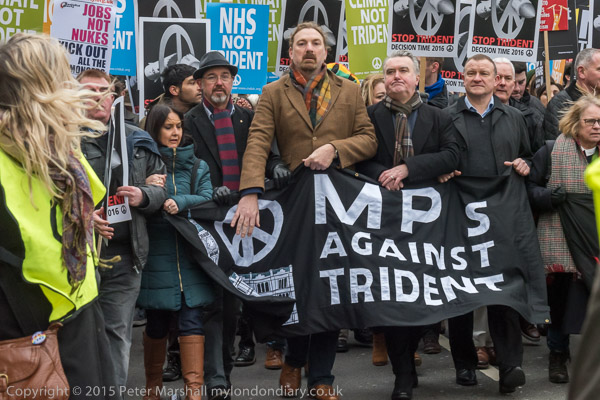
Portobello Rd, Notting Hill 1987
Notting Hill has “gone up in the world”, if down in my respect, one of London’s epicentres of gentrification, and now a mega-tourist attraction post the 1999 film of the same name. When we went there in March, the language on the streets was Italian – even some of the beggars had signs in Italian. Both tourism and gentrification have had a heavy toll, and little of the old Notting Hill remains, though in some respects the setting is the same.
Class War came to Notting Hill long ago -back in 1837 when John Whyte enclosed land to form a racecourse, the Hippodrome, and closed a well-used public right of way. At the first race meeting, several thousand are said to have used the closed footpath to make holes in the fence and get in free. More legally, a gang of labourers from the local authority went and cleared the obstuctions to the path but Whyte simply restored them.The matter went to court, where Whyte lost but still kept the path closed and instead tried to get an Act of Parliament to allow him to divert it rather than let the hoi polloi disturb him and his upper class mates.
The people set up a petition and went to the newspapers, telling them about the various illegal activities going on there, unlicensed drinking, gambling, prostitution, and pickpockets – and The Times (long before Murdoch who would probably have backed the racecourse) wrote a leader condemning it as a den of vice. Eventually Whyte was forced to re-route the racetrack and restore the footpath – which he did with a high metal fence on each side so the riff-raff could not see the toffs.
The race track soon failed, not because of the footpath but the heavy soil, which made it dangerous for racing in wet conditions, and many horse owners refused to risk their mounts. The ground was sold to a Mr Ladbroke, a developer and that disputed footpath became, more or less, Ladbrooke Grove.
The radical history of Notting Hill continued – and you can read more in Tom Vague’s ‘Bash the Rich‘ where you can read about Chartist leader Feargus O’Connor, the Campden squatters, George Orwell, the Free Republic of Frestonia, the Angry Brigade, King Mob, the International Times, the original Hustler, the Carnival riots and more.
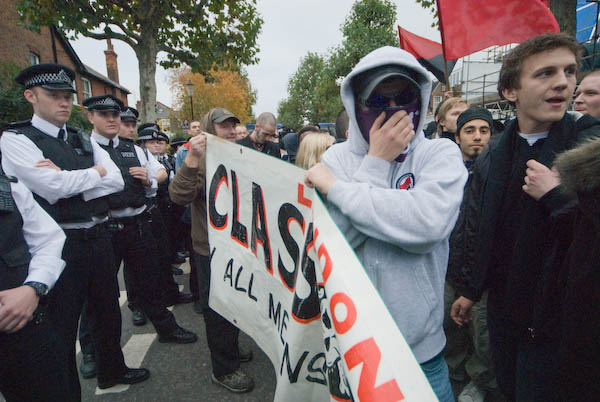
Bash the Rich, 2007
Class War returned to Notting Hill and marched through Ladbroke Grove to Holland Park on the first BASH THE RICH march in 1985. Twenty two years later they returned, and this time I went with them.
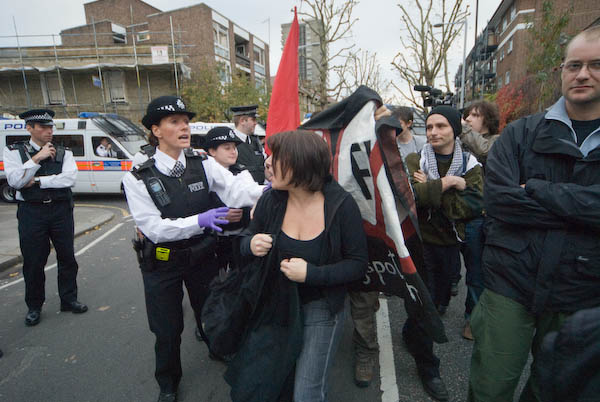
Bash the Rich, 2007
The event was heavily policed, with protesters and press getting pushed around considerably, and there were several arrests for no particular reason (mainly I think for objecting to police violence) with those arrested being released without charge after a few hours of arbitrary detention. You can see more pictures at Bash the Rich.
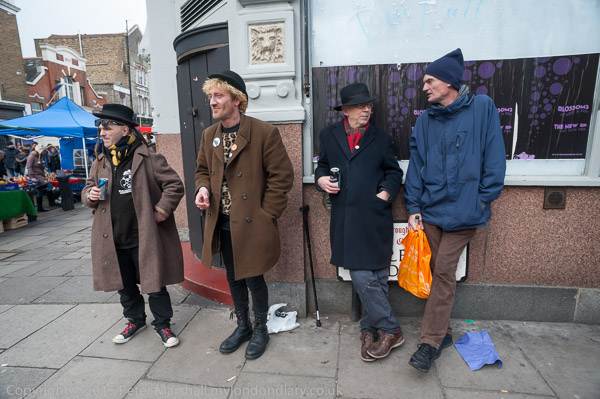
This year’s ‘historic, riotous and fun‘ Notting Hill pub crawl attracted rather fewer people and less attention from the police. It had been planned to start at the former Colville Hotel where Class War’s first conference was held, but the few of us who had arrived on time to find the bar there boarded up and up for sale, and had to stand outside and drink from tins. With Class War’s Rita the Raven. But a close pub is no good to man, woman or beast and we didn’t hang around too long. So some late-comers missed the tour.
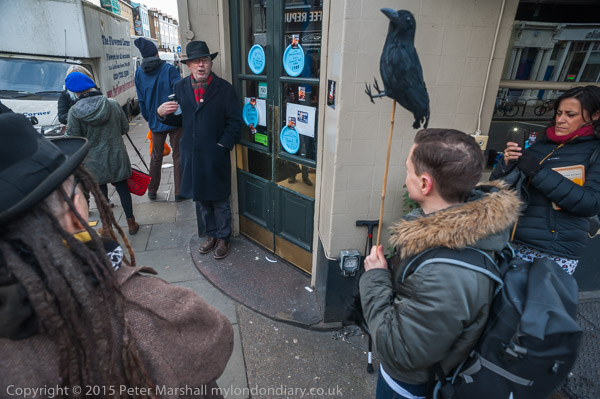
The next pub on the route, formerly the Warwick Castle, once the heart of Notting Hill is now gentrified out of recognition as simply the Castle, had ‘closed for maintenance‘ for a few hours having heard Class War was coming, so again we had to stand outside. There was no sign of any maintenance inside – the only thing being maintained was a very low and scared profile. People put up blue plaques (or rather blue paper plates) to mark this as the place where Ian Bone met Joe Strummer who jumped at the idea of the 1988 Rock Against the Rich tour.
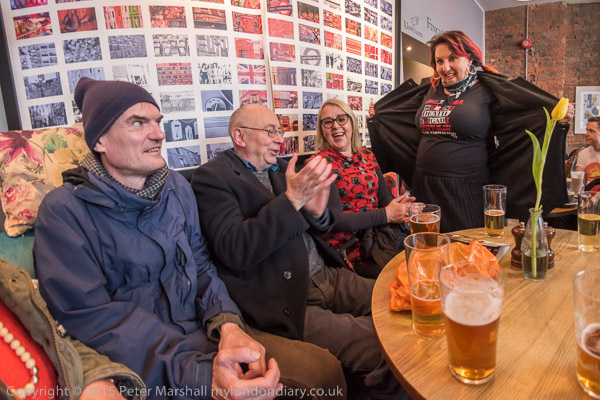
There were just a few police following us a few paces away as we walked down to the next venue, the Duke of Wellington tourist trap, once H H Finch‘s bar. They seemed to have extra bouncers on duty, but let us in and we got served, though Young’s isn’t my favourite brewery and the price was high. But I paid up and swallowed my Pride slowly. We sat for a while with a few more joining the tour, including a visit from Ray ‘Roughler’ Jones whose epic book about the Warwick Castle was titled ‘3000 Hangovers Later‘.
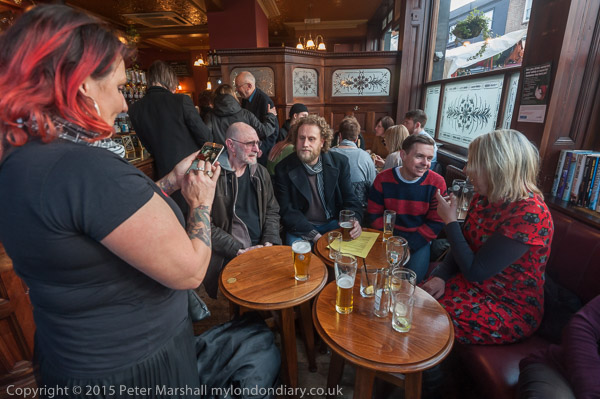
It wasn’t far until our next stop, one of the few real pubs left in Notting Hill, though not quite as genuine as it seems. The Earl of Lonsdale, was once Henekey‘s, but was remodelled as Sam Smith‘s pub in a way that pretty authentically recreates the real thing – as do a number of other pubs they have worked on. It seemed we had settled down for the day, but more people were joining the tour, and onwards it went.
The next stop wasn’t a pub, but the house were George Orwell once lived – and which recently has appeared on in a faked image on Facebook with a CCTV camera Photoshopped on the the wall close to the blue plaque. As Lisa McKenzie gave us the low-down on Orwell as an upper class toff but one who understood the class war we noticed that there was indeed a small camera covering the doorway.
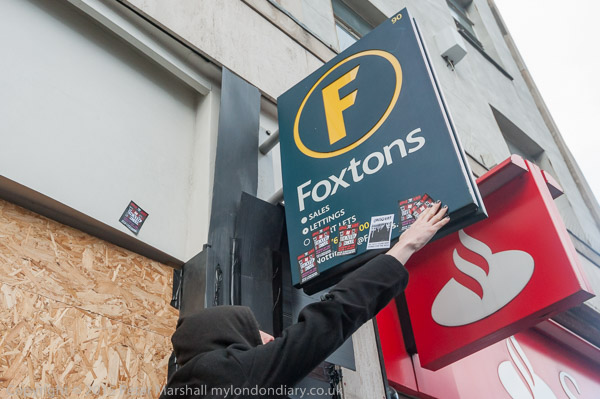
But this was Class War and we were close to a branch of Foxton’s, that arch-agency of gentrification, and it was our next stop. We were amused to find it had been closed and boarded up in anticipation of our visit, and it was duly stickered. A speech about the role of this company in gentrification had to be abandoned after a few minutes when a number of police vans came in sight and the tour melted away into the nearby Prince Albert, built in 1841 at the gate to the Hippodrome.
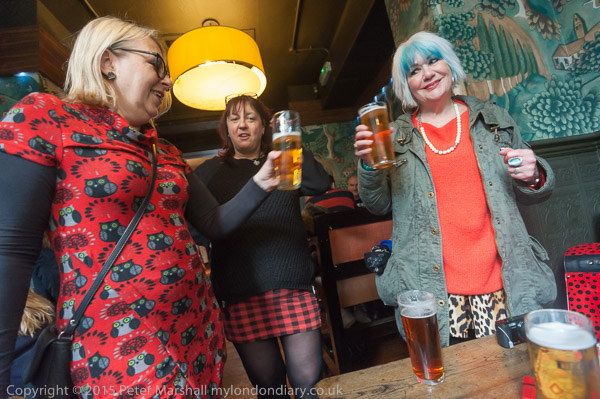
After we had been in there for around an hour (including a Class War make-up lesson) it became clear that this was to be the end of the tour rather than as intended the Daily Mail offices, where no food or drink was likely to be available, though probably a few police officers were still awaiting our arrival. So I said goodbye and left as I could expect a good dinner waiting for me at home.
More pictures and text: Class War’s Notting Hill Pub Stroll
Continue reading Notting Hill Revisited









